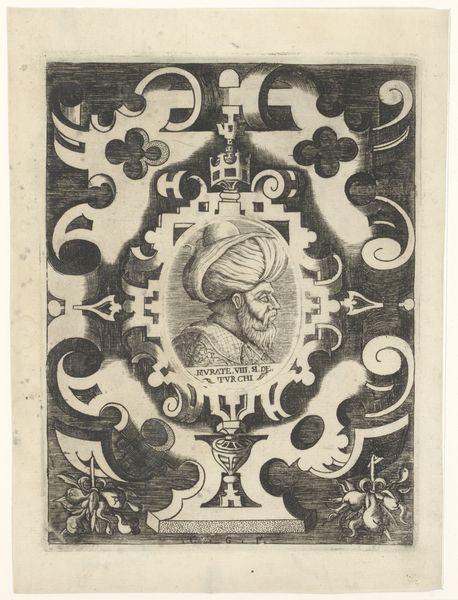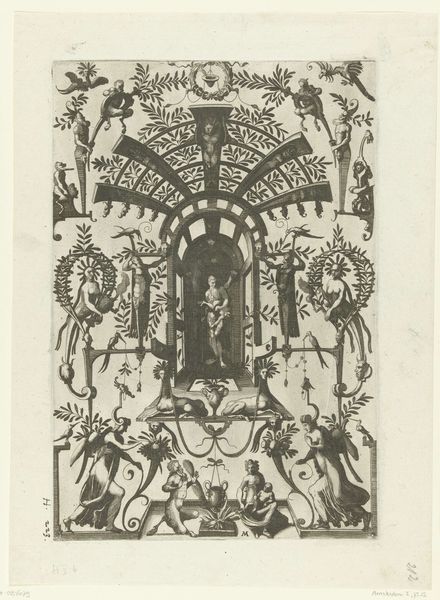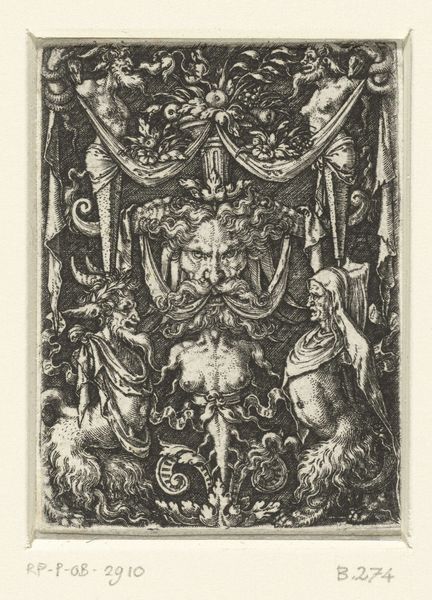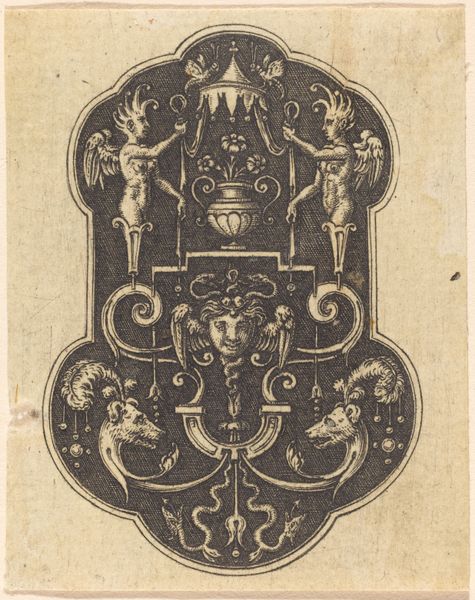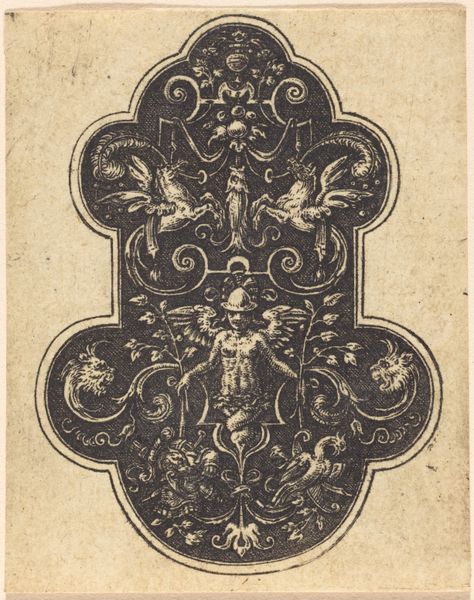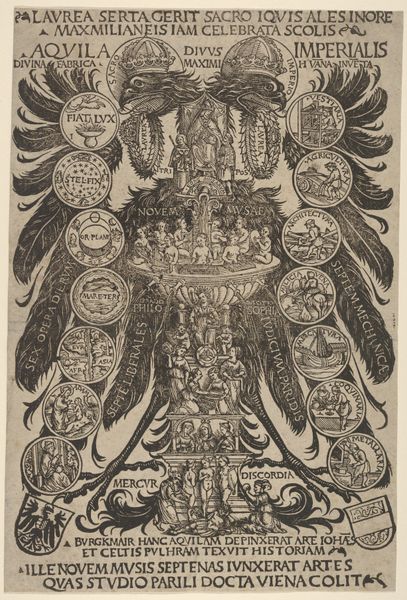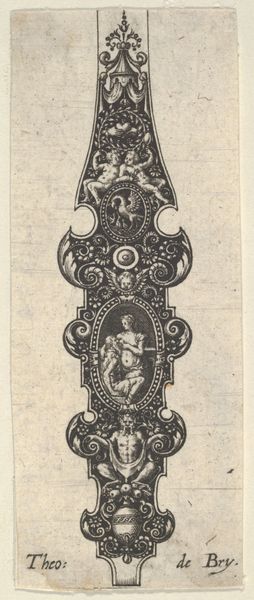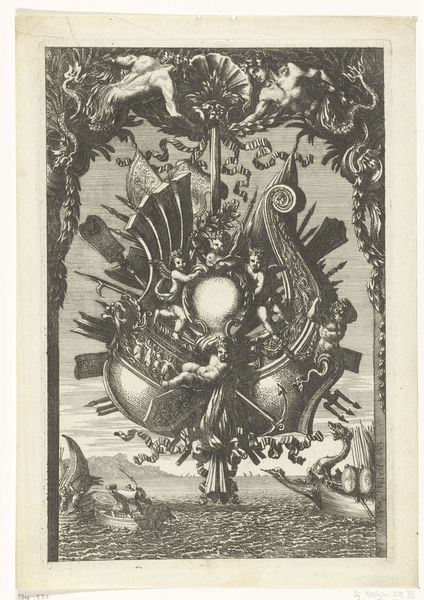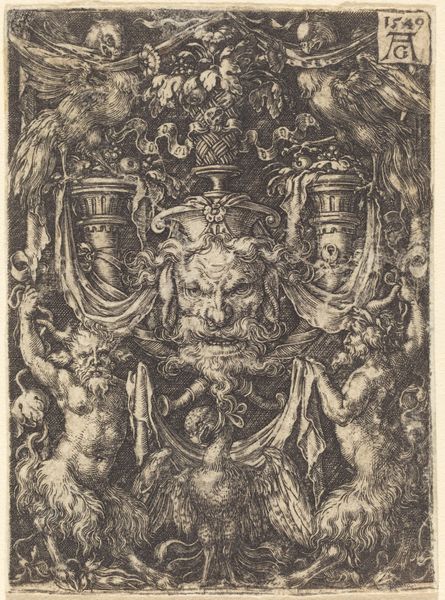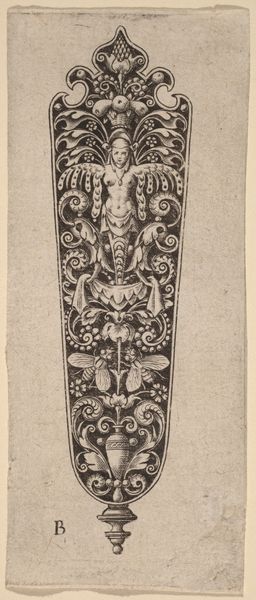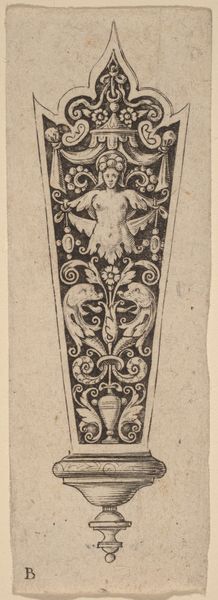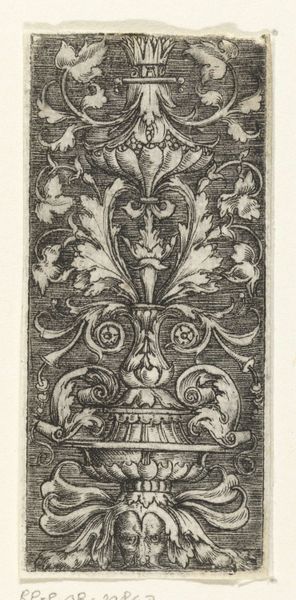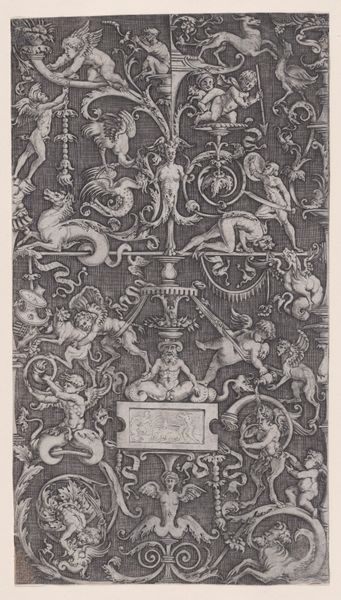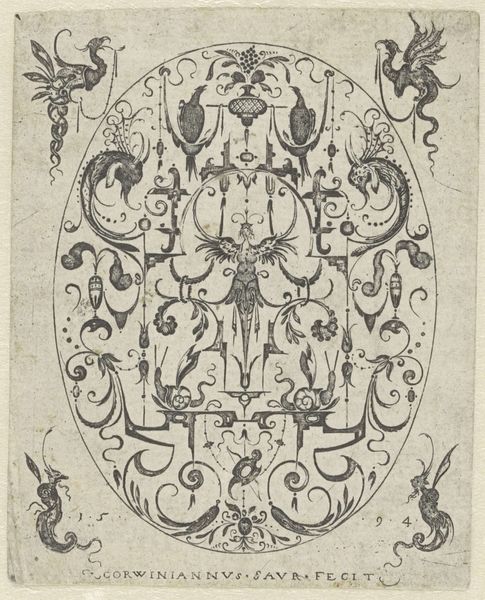
Grotesk ornament met de tronende godin Minerva in het midden 1624 - 1679
0:00
0:00
ornament, print, engraving
#
ornament
#
baroque
#
pen drawing
# print
#
figuration
#
geometric
#
line
#
history-painting
#
engraving
Dimensions: height 182 mm, width 145 mm
Copyright: Rijks Museum: Open Domain
Editor: This pen drawing, "Grotesk ornament met de tronende godin Minerva in het midden," whose artist is anonymous, comes to us from between 1624 and 1679. What strikes me most is how busy it is! It feels almost overwhelming with all the figures and ornamentation. How do you interpret this work, and where do you even begin to unpack it? Curator: It's definitely a complex piece! But that density speaks volumes about the Baroque period. We have to think about the cultural climate of the time. The prominence of Minerva, the goddess of wisdom and strategic warfare, invites us to question what kind of "wisdom" is being promoted, particularly within systems of power during this period. Consider, who benefitted from this classical imagery, and whose voices were excluded? Editor: That's an interesting perspective. I hadn't thought about the power dynamics at play. It seems easy to just appreciate the detail and the skill of the artist without questioning its broader context. The visual elements like the symmetry and the abundance of detail contribute to this feeling of established power. Curator: Exactly. Think about how the print medium itself contributed to the spread of these ideas. These ornaments, disseminated widely, subtly reinforced hierarchical structures and societal expectations. And for whom was knowledge accessible? To what extent was Minerva seen as a representation of *female* strength, and to what extent was it reinforcing *patriarchal* ideology? Editor: So, by analyzing even an ornament like this, we can start to uncover some of the less visible social and political narratives of the 17th century. It's much more than just a pretty picture. I now see how Baroque art reflects complex negotiations of power and gender through symbols that demand to be decoded in light of the social context. Curator: Precisely! Art is rarely made in a vacuum; understanding its historical and social context can provide rich insights into the culture that produced it, and who that culture uplifted or diminished.
Comments
No comments
Be the first to comment and join the conversation on the ultimate creative platform.
